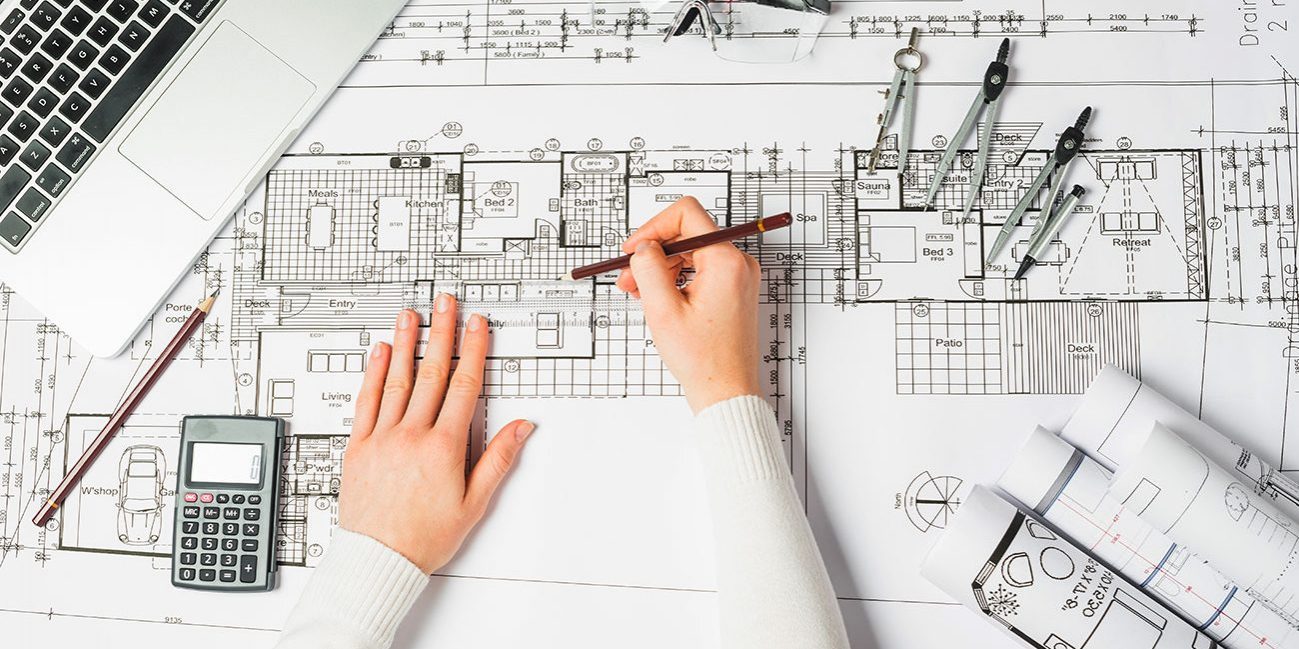Architect-Approved Home Remodeling Ideas
Wiki Article
Comprehending the Diverse Job Paths Available for Aspiring Architect
As an aspiring Architect, you have a world of job paths waiting for you. Each course supplies special obstacles and chances to apply your imagination and technical knowledge. Whether you're attracted to standard design or the subtleties of lasting layout, there's a particular niche that aligns with your interests. Understanding these diverse alternatives can form your specialist journey, however which direction will you select to check out initially?Typical Style: Creating Buildings and Structures
Typical architecture concentrates on making structures and structures that blend capability with visual charm. Your designs can show cultural heritage, showcasing regional traditions while meeting modern requirements.You'll develop skills in preparing, model-making, and site evaluation, enabling you to visualize and interact your ideas efficiently. Engaging with clients, you'll require to comprehend their vision and translate it right into possible styles.
Moreover, constructing codes and sustainability techniques are important in your work, ensuring your frameworks are secure and eco-friendly. As you grow in your career, you'll find possibilities in property, commercial, or perhaps remediation tasks, each offering one-of-a-kind obstacles. Welcoming conventional style leads the way for a meeting job that admires the past while forming the future.
Urban Planning: Shaping Neighborhoods and Public Spaces
As an ambitious Architect, you can play an important duty as a metropolitan organizer, transforming how neighborhoods engage and work. By employing community engagement methods, you'll assure that residents have a voice fit their environment. And also, integrating sustainable layout principles will help develop rooms that not just fulfill today's demands yet additionally safeguard the future.Role of Urban Planners
While numerous might assume of designers as the sole visionaries behind buildings, city coordinators play a crucial function in shaping the more comprehensive landscape of neighborhoods and public areas. By collaborating with numerous stakeholders, you'll help make parks, transport systems, and residential areas that promote social communication and accessibility. Your know-how in spatial design and neighborhood characteristics allows you to imagine future growth while preserving cultural heritage.Community Involvement Techniques
Reliable community engagement methods are vital for metropolitan organizers to assure that the voices of residents are listened to and valued in the preparation procedure. To cultivate significant dialogue, you must focus on open forums and workshops where area members can express their concepts and problems. Use surveys and social media sites to reach a more comprehensive audience, making certain diverse point of views are included. Working together with regional organizations can improve depend on and promote much deeper connections. It is essential to supply clear info regarding decision-making procedures and suggested projects, permitting homeowners to really feel informed and empowered. By proactively integrating and paying attention feedback, you'll produce areas that reflect the area's requirements, inevitably resulting in more lasting and effective city atmospheres. Accept openness and constant discussion for long-term impact.Lasting Style Concepts
When making metropolitan spaces, incorporating sustainable layout concepts is crucial for producing atmospheres that flourish both ecologically and socially. Take into consideration integrating green areas, like gardens and parks, to improve biodiversity and enhance air high quality.Creating with water preservation in mind is additionally essential-- think regarding rain gardens and absorptive surface areas to manage stormwater. Involving area members during the planning procedure warranties that the spaces you develop satisfy their needs and urge social interaction. By accepting these concepts, you'll add to vibrant, lasting urban landscapes that benefit everyone.

Landscape Style: Producing Lasting Exterior Settings
As you explore landscape design, you'll discover important design principles that create useful and attractive outside rooms. Sustainable techniques play a vital role in ensuring these settings thrive while minimizing ecological effect. Plus, you'll discover a range of career opportunities that permit you to make an actual distinction in how individuals connect with nature.Design Concepts in Landscape
Recognizing style concepts in landscape style is essential for producing sustainable outdoor atmospheres that balance with nature. You'll require to ponder elements like equilibrium, percentage, and range to assure your designs really feel cohesive and welcoming. Incorporating indigenous plants not just boosts biodiversity however also lowers water usage, making your landscape resistant. Believe concerning the flow of area and how individuals interact with it; pathways and seating areas must invite exploration and leisure. Furthermore, take note of seasonal changes, designing with materials that match the environments year-round (Architect). By prioritizing sustainability and visual appeals, you can develop outdoor rooms that enhance the neighborhood and advertise health. Embracing these concepts will certainly establish a strong foundation for your career in landscape design.Lasting Practices Review
Lasting practices in landscape style why not find out more not only concentrate on looks yet likewise focus on ecological health and wellness and resource preservation. By integrating indigenous plants, you improve biodiversity and reduce the requirement for chemical plant foods and pesticides. Applying reliable irrigation systems assists save water and reduces runoff, protecting neighboring ecosystems. You can develop rooms that advertise dirt health and wellness, such as utilizing natural materials and exercising permaculture concepts. Furthermore, integrating green infrastructure, like rainfall yards and porous pavements, help in stormwater administration and lowers city warm. You contribute to a much healthier planet and provide rooms that cultivate area link when you produce exterior atmospheres with sustainability in mind. Ultimately, these methods ensure your layouts profit both people and the atmosphere for several years to come.Profession Opportunities Expedition
With a solid foundation in lasting techniques, landscape architecture provides a variety of profession courses that enable you to make a purposeful effect on the setting. Urban coordinators frequently team up with landscape engineers to create green rooms in city settings, boosting city livability. If you're passionate about education and learning, think about becoming a landscape design instructor, motivating future generations.Sustainable Design: Concentrating On Eco-Friendly Practices
As you explore your career in architecture, welcoming environmentally friendly methods can establish you apart in an affordable area. Lasting style concentrates on developing buildings that reduce ecological effect while enhancing resident wellness. By including renewable materials, energy-efficient systems, and sustainable structure techniques, you'll add to a greener future.Start by obtaining understanding of eco-friendly certifications like LEED or BREEAM, which can strengthen your qualifications. Think about how all-natural light, ventilation, and thermal efficiency can optimize layout. Team up with engineers and environmental experts to introduce services that minimize waste and preserve resources.
Don't fail to remember the significance of neighborhood involvement-- engaging neighborhood stakeholders can influence styles that balance with the atmosphere. As clients progressively prioritize sustainability, your proficiency in green methods will certainly not just bring in jobs but additionally fulfill your enthusiasm for responsible style. Accept this essential aspect of the profession, and watch your profession prosper.
Historical Preservation: Shielding and Bring Back Cultural Heritage
While you start on your building trip, think about the important function of historical preservation in maintaining our social heritage. This area concentrates on the defense and repair of significant buildings, websites, and structures that inform the tales of our past. By engaging in historic preservation, you'll assist secure the building heritage that forms neighborhood identity.As a historical conservation Architect, you'll assess historical significance and evaluate the problem of structures. You'll function very closely with guardians and chroniclers to ensure authentic reconstruction techniques are utilized. This career course allows you to blend imagination with research, allowing you to make solutions that appreciate original materials and craftsmanship.
Your job not only adds to sustainability by recycling existing structures but also promotes a sense of pride within areas. Embracing this path will certainly assist you come to be a guardian of background, maintaining the tales and looks that enrich our lives.
Inside Design: Enhancing Indoor Spaces
Historic conservation and indoor design both share a dedication to boosting the developed atmosphere, however they focus on various facets. While historic preservation emphasizes preserving a framework's social and historical value, interior style nos in on optimizing indoor rooms for performance and appearances.As a hopeful Architect, you'll locate that interior style enables you to mix creative thinking with technological skills. You'll make spaces that not only look excellent yet likewise advertise comfort and effectiveness. This area entails comprehending how light, color, and products communicate within a room, impacting state of mind and functionality.
You'll deal with different jobs, from domestic homes to industrial workplaces, guaranteeing that each setting meets the demands of its passengers. By prioritizing customer experience, you can change interiors right into motivating and practical areas, making a significant influence on just how individuals communicate with their surroundings. Accept the possibility to boost interior environments and form the way individuals live and function.
Industrial Style: Combining Performance With Appearances
Industrial design plays a crucial duty in creating products that effortlessly blend visual appeals with functionality, making certain that what you utilize daily is not only visually attractive yet likewise practical. As an aspiring his comment is here Architect, you can immerse on your own in this area, concentrating on developing everything from furniture to consumer electronics. Your job entails understanding user needs, products, and making processes, enabling you to create ingenious services that enhance daily experiences.In industrial style, you'll commonly work together with suppliers, marketing experts, and engineers, ensuring that your layouts are not just gorgeous however likewise possible. You'll find out to stabilize form and feature, prioritizing functionality without compromising style. By sharpening your abilities in mapping out, 3D modeling, and prototyping, you'll be fully equipped to bring visit homepage your ideas to life. This career path supplies a dynamic setting where creative thinking meets usefulness, making it a gratifying selection for designers thinking about forming the products of tomorrow.
Regularly Asked Questions
What Educational Qualifications Do I Need to End Up Being an Engineer?
To become an architect, you'll need a specialist level in design, commonly a Bachelor's or Master's. In addition, you'll need to complete a teaching fellowship and pass the Architect Registration Examination to exercise legally.Are There Qualification Demands for Various Architectural Profession Paths?
Yes, there're qualification needs for various architectural courses. Architect. You'll need to pass exams, full internships, and often pursue specialized training, relying on your picked emphasis, like landscape architecture, city style, or historic preservationWhat Software Application Skills Are Crucial for Architects Today?

How Can I Gain Practical Experience While Studying Style?
You can gain useful experience by interning at building firms, taking part in design competitions, offering for area tasks, or collaborating with schoolmates on real-world jobs. These possibilities enhance your skills and build beneficial links in the industry.What Work Opportunities Exist Outside Typical Style Firms?
You can check out different job possibilities outside typical design companies, like urban planning, indoor style, landscape architecture, construction administration, realty growth, or also duties in sustainability consulting. Each deals distinct challenges and benefits.Whether you're attracted to standard design or the subtleties of lasting design, there's a particular niche that aligns with your rate of interests.When creating city areas, including sustainable design concepts is important for developing environments that grow both environmentally and socially.As you discover landscape design, you'll find vital design concepts that create useful and stunning outdoor areas.Understanding layout principles in landscape style is vital for developing lasting outside atmospheres that balance with nature.In commercial style, you'll frequently team up with online marketers, manufacturers, and engineers, ensuring that your designs are not only beautiful yet additionally possible.
Report this wiki page